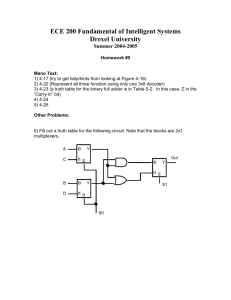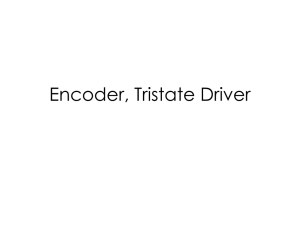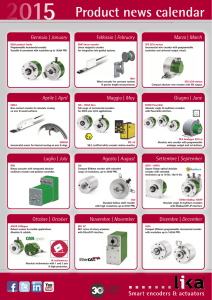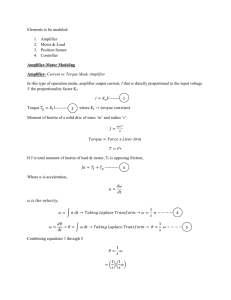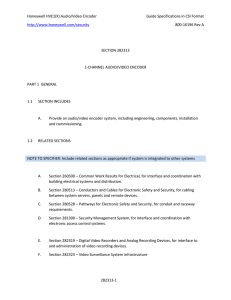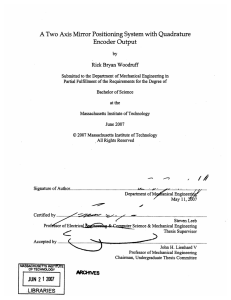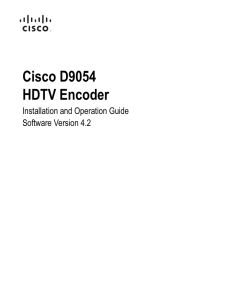Lecture 8
advertisement
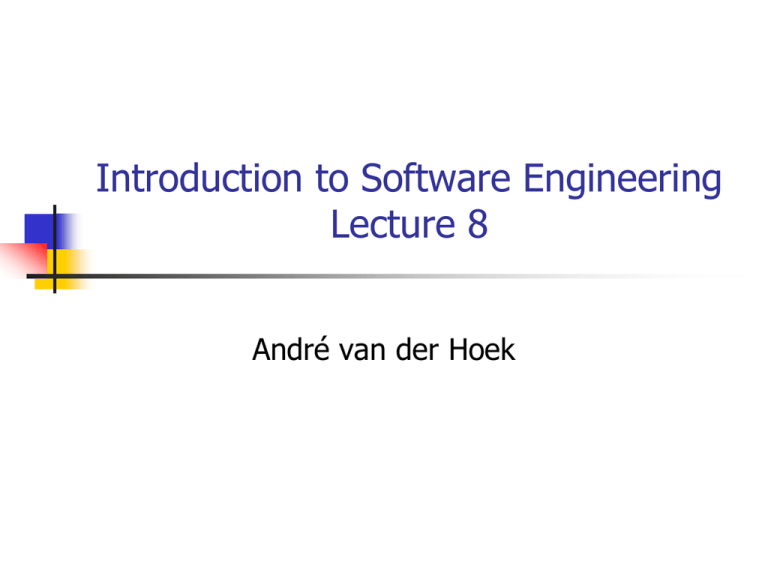
Introduction to Software Engineering Lecture 8 André van der Hoek Today’s Lecture USES relation IS-COMPOSED-OF relation COMPRISES diagram USES diagram In Design, We Can Do Anything… Provided Interface Big Component Provided Interface Tiny Component Required Interface Required Interface Provided Interface B Component Required Interface Provided Interface A Component Provided Interface Some Component Required Interface Provided Interface Mr. Component Required Interface Required Interface Provided Interface Mrs. Component Required Interface Provided Interface One Component Required Interface Provided Interface Yet Component Required Interface …Even when Restricted by Style Provided Interface Layer 4 Required Interface Provided Interface Layer 3 Required Interface Provided Interface Layer 2 Required Interface Provided Interface Layer 1 Required Interface What happened here? Fan-in and Fan-out High fan-in Low fan-in Provided Interface Provided Interface Component Component Required Interface Required Interface Low fan-out High fan-out USUALLY GOOD! USUALLY BAD! USES Relation Definition Level 0: those modules that do not use any other modules Level i: those modules that use at least one module at level i – 1 and use no modules at level i or greater Use Determine flexibility Determine reuse Determine incremental testability Example Provided Interface Level 2 Big Component Required Interface Provided Interface A Component Required Interface Provided Interface Tiny Component Required Interface Provided Interface Yet Component Required Interface Level 1 Level 0 Level 0 Observations The USES relation does not necessarily form a hierarchy An acyclic directed graph is good Cycles generally are bad Indication of high coupling Indication of broken separation of concerns Rules of thumb: allow a to use b… …if it makes a simpler …if b is not only used by a but also by other components IS-COMPONENT-OF Relation Definition Module Mi IS-COMPONENT-OF module M if M is realized by aggregating several modules, one of which is Mi The combined set of all modules that exhibit the IS-COMPONENT-OF relation with respect to module M are said to implement module M Use Determine hierarchical decomposition of a component in its subcomponents Abstract details Example Provided Interface Reader Required Interface Encoder Audio Encoder Compressor Provided Interface Required Interface Compressor IS-COMPONENT-OF Audio Encoder Encoder IS-COMPONENT-OF Audio Encoder Reader IS-COMPONENT-OF Audio Encoder Compressor, Encoder, and Reader IMPLEMENT Audio Encoder Audio Encoder IS-COMPOSED-OF Compressor, Encoder, and Reader Comprises Diagram Provided Interface Bla Component Provided Interface Doh Component Provided Interface Provided Interface Duh Component Tiny Component Provided Interface Required Interface Big Component Required Interface Provided Interface B Component Provided Interface Required Interface A Component Required Interface Provided Interface Mr. Component Required Interface Required Interface Required Interface Provided Interface Yet Component Required Interface Required Interface USES Diagram – Step 1 Provided Interface Doh Component Provided Interface Provided Interface Duh Component Tiny Component Provided Interface Required Interface Big Component Required Interface Provided Interface B Component Provided Interface Required Interface A Component Required Interface Provided Interface Mr. Component Required Interface Required Interface Required Interface Provided Interface Yet Component Required Interface USES Diagram – Step 2 Provided Interface Tiny Component Provided Interface Required Interface Big Component Required Interface Provided Interface B Component Provided Interface Required Interface A Component Required Interface Provided Interface Mr. Component Required Interface Provided Interface Yet Component Required Interface USES Diagram – Step 3 Provided Interface Tiny Component Provided Interface Required Interface Big Component Required Interface Provided Interface B Component Provided Interface Required Interface A Component Required Interface Provided Interface Mr. Component Required Interface Provided Interface Yet Component Required Interface USES Diagram – Step 4 Provided Interface Provided Interface 2 Tiny Component Required Interface Big Component Required Interface Provided Interface 3 Provided Interface 1 2 B Component Required Interface A Component Required Interface Provided Interface Mr. Component Required Interface Provided Interface Yet Component Required Interface 0 1 Observations Why do we identify higher-level modules in the first place? Understanding Abstraction through composition IS-COMPONENT-OF is not is-attribute-of is-inside-of-on-the-screen is-subclass-of is-accessed-through-the-menu-of The Design Process Repeat the design process Design the internal architecture of a component Define the purpose of each module Define the provided interface of each module Define the required interface of each module Do this over and over again Until each module has… …a …a …a …a simple, well-defined simple, well-defined simple, well-defined simple, well-defined internal architecture purpose provided interface required interface Until all modules “hook up” Techniques to Use Tools of the trade Apply information hiding Use requirements specification Determine usage patterns Anticipate change Design for generality/incrementality Design for program families Strive for Low coupling/high cohesion A clean IS-COMPOSED-OF structure A clean USES structure Your Tasks 1. Read and study slides of this lecture
